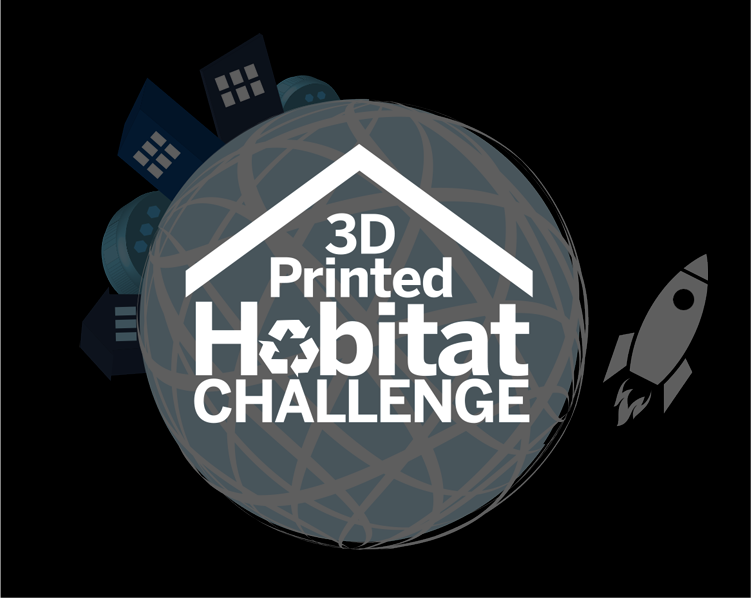NASA and America Makes are sponsoring a new challenge for designers to create concepts for a space habitat made with 3D printing technology.
This follows ongoing research by NASA on methods of 3D printing using in situ materials. When they figure that out, the next problem is what to print? What should the design be? What are important elements that should be included? How can a habitat be made safe, efficient and reliable?
These questions would require considerable research, but NASA is attempting to short-circuit the analyses by issuing a public challenge to designers. Presumably, entries will be all over the map, with some good submissions and many poor ones. But embedded within all the submissions will be a comprehensive set of ideas that can be leveraged by NASA in future “real” designs. Here’s how they describe it:
The 3D-Printed Habitat Challenge seeks to develop the fundamental technologies necessary to manufacture an off-world habitat using mission recycled materials and/or local indigenous materials. The vision is that autonomous habitat manufacturing machines will someday be deployed to the Moon or Mars to construct shelters for human habitation.
The challenge is actually comprised of three stages, of which only the first is open:
- Design Competition – focused on developing innovative habitat
- architectural concepts that take advantage of the unique capabilities that 3D printing offers.
- Structural Member Competition (Level 1) – focused on the core fabrication technologies needed to manufacture structural components from indigenous materials combined with recyclables, or indigenous materials alone.
- On-Site Habitat Competition (Level 2) – focused on the fabrication of a full-scale habitat using indigenous materials combined with recyclables, or indigenous materials alone.
Specifically, the goal is to meet the needs of a mission concept:
Meet our (fictional) NASA crew of four, who have been chosen for their grit, grace and intellect to be the first humans ever to step foot on Mars. As they prepare for their long journey to the red planet in 2035, they are undergoing a training program wherein they will reside in approximately 1000 ft2 of living space for 1 year. Their new adopted home should contain everything needed to comfortably sustain human life, including cooking areas, sleeping quarters and bathroom facilities. Their jobs as geologists, land surveyors, prospectors, scientists, biologists, & engineers should also be considered while creating this structure, as it will act as a prototype for the one that they’ll reside in while on Mars.
Entries must provide a physical 3D print of their concept for judging at this year’s New York City Makerfaire, where a purse of USD$50,000 will be divided among three finalists.
It’s a big ask by NASA: design a house for another planet that can be made with a replicator. But we’re certain many designers will jump on this opportunity.
Via NASA and America Makes


